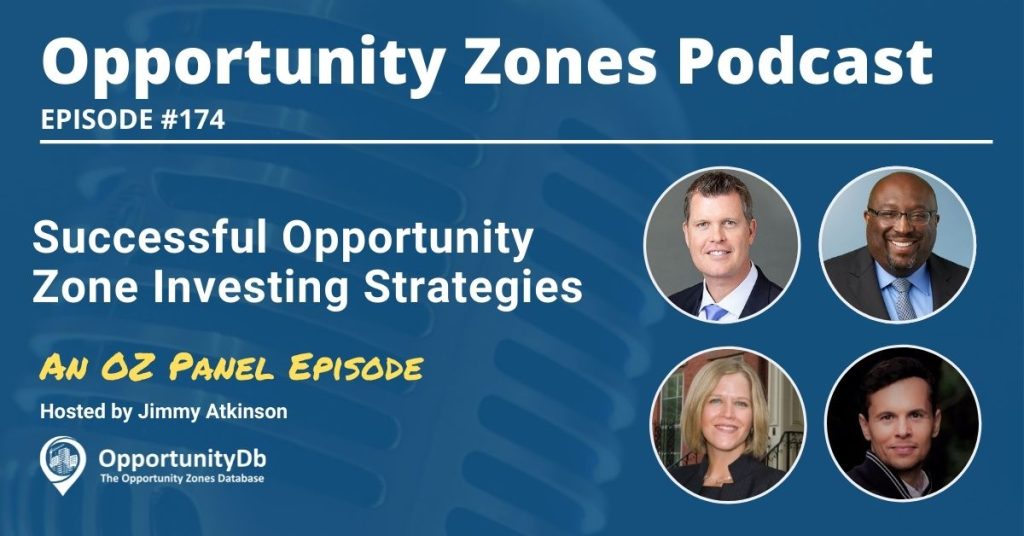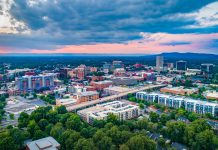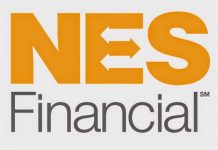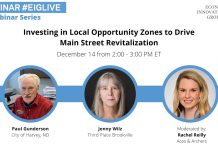Opportunity zone investments come with inherent potential risk, but they also offer several key advantages. Before diving in, it’s important to understand investment strategies specific to OZ assets and projects.
This episode is the audio version of a live opportunity zones panel at the AnySizeDealsWeek Festival of Real Estate Innovation in Las Vegas, Nevada with, a focus on successful opportunity zones investment strategies. The panel was moderated by OpportunityDb founder Jimmy Atkinson. Panelists: Ashley Tison, Bo Kemp, Peter Ciganik, and Jill Homan.
Click the play button above to listen to the audio recording of the panel.
Episode Highlights
- How the Opportunity Zone program offers tax benefits to investors making a qualified investments in Qualified Opportunity Funds (QOF).
- What gains are eligible for deferral, when investments in QOFs must be made.
- How Qualified Opportunity Funds can remain an option for deferral of capital gains within noted time frames.
- Depreciation recapture and how does it work with investing in OZ projects.
- Why multifamily properties can be more resilient than other asset classes.

Featured On This Episode
- Jill Homan | Javelin 19 Investments
- Bo Kemp | Southland Development Partners
- Ashley Tison | OZPros.com
- Peter Ciganik | GTIS Partners
- AnySizeDealsWeek
Industry Spotlight: AnySizeDealsWeek
AnySizeDeals Week is the annual Festival of Real Estate Innovation. It’s the premier thought leadership and dealmaking event in the real estate industry. It’s 3 days of dynamic conversations, networking, dealmaking, and showcases for the most influential leaders in the real estate and PropTech Space. The event caters to senior executives at large real estate firms, big tech companies, and startups.
Learn More About AnySizeDealsWeek
About The Opportunity Zones Podcast
Hosted by OpportunityDb.com founder Jimmy Atkinson, The Opportunity Zones Podcast features guest interviews from fund managers, advisors, policymakers, tax professionals, and other foremost experts in opportunity zones.
Show Transcript
Jimmy: Welcome to The Opportunity Zones Podcast. I’m your host Jimmy Atkinson. Back in September, I visited Las Vegas, Nevada, to moderate a live opportunity zones panel at the AnySizeDealsWeek Festival of Real Estate Innovation. This panel focuses on successful opportunity zone investing strategies from varying perspectives. Enjoy. Before we dive in, let’s get an introduction from each of our panelists. I’ll start with the Bo Kemp there at the end. Introduce yourself. Say hello.
Bo: Hello, everyone, Bo Kemp. I’m the CEO of Southland Development Authority. We managed about 45 cities, towns, and villages outside of Chicago doing economic development. I also am a partner with a group called the Fluent Group, which is based in Los Angeles, California. I’ve been doing OZ work since the beginning. I used to work with Cory Booker prior to the legislation. So, I was early on in the space. I’ll hand it over to you, I guess.
Ashley: I’m Ashley Tison. I’m an attorney and I founded a company called ozpros.com with Jimmy. And we set about to become the LegalZoom for opportunity zones back in 2019. And we very quickly figured out that giving people the ability to do it themselves was a really bad idea because they always mucked up the forms. And so, we kind of became a full-service shop for helping democratize access to opportunity zones. So helping people across the country that had smaller projects or that had bigger projects but that wanted to get to an answer on those really fast to come up with a solution for that. So, we bring in kind of big firm experience and expertise, but we do it on an affordable, as-consumed basis. So we do that via strategy calls. We’ve got off-the-shelf funds and QOZBs that we offer as well. And then we do ongoing compliance training to help people build their compliance muscles as they go forward with their opportunity zone endeavors.
Peter: Good afternoon. Peter Ciganik with GTIS Partners, an investment fund manager based in New York. We manage about $4.5 billion of assets across residential and industrial properties. And since 2019 have been investing in opportunity zones in a fun format because a lot of our past projects basically ended up into zones when they were designated and we figured out why not put a nice and attractive tax incentive on top of what we do anyway. So here we are, a couple of years later, a project underway. And one of them is actually here in Vegas. Symphony Park is the master plan downtown, and happy if you would join me later in the afternoon for a tour of it.
Jill: All right, good afternoon, everyone. My name is Jill Homan, president, of Javelin 19 Investments. So we’re an opportunity zone investment and advisory firm. We focus on three verticals, the first of which is we’re doing some development in opportunity zones. Secondly, I’m a registered investment advisor representative. So I am affiliated with an RIA and we provide investment advice to investors and family offices who like to allocate and use this incentive. And thirdly, we are working with two opportunity funds. One is a sports-anchored opportunity fund and the other is a West Coast-based opportunity fund and we’re serving to enhance their really investment advisory and underwriting capabilities.
Jimmy: Well, thank you panelists for being here. Again, I’m Jimmy Atkinson. I’m the founder of the Opportunity Zones Database at opportunitydb.com which serves as an educational platform and a matchmaking platform connecting investors who have capital gains to OZ funds and deals who are seeking capital. And I’m also the co-founder of OZ Pros along with Ashley Tison as he already mentioned.
So, today’s panel or this panel right now, we’re really gonna focus on successful opportunity zone investing strategies. The four panelists up here today have a lot of deep experience seeing a lot of deals and seeing a lot of investors. And they have a good handle on what worked. They all bring different perspectives though. So we’ll get to that in a moment. But first, I wanted to just kind of zoom out and take a look at what we have on the screen over there, which is really the impact fact that the opportunity zone benefit has on returns on an after-tax basis. And Jill and Peter, I wanna turn to you and get your thoughts on this. And Jill, this is your slide. You presented that to me. So take it away for a minute and kind of walk us through.
Jill: Sure. I’ll start and then hand it over to Peter. So, if you remember nothing else from me, you can remember a lot from everybody else, but nothing else from me, my takeaway is that when you look at the total opportunity zone incentive benefits, the net benefit is, potentially, a higher after-tax return in the order of magnitude of 40% to 50%. And so this is what really this demonstrates in the slide is looking at the pre-tax, or I’m sorry, the after-tax returns without the benefit and then the after-tax returns with the benefit. And it shows…I can’t even see from here. It’s so bad. But that’s what the slide shows and I think it says 8% and then it’s at 12%. So it’s showing the after-tax return. And then I know, Peter, you all have done research on, you know, what’s driving the alpha of that return. So I can just hand it off to you as well if you want to elaborate on that.
Peter: Not much to add to that. I agree, it adds about 4% or so to your underlying investment return. So, if you’re asking where to make a 10% return with this benefit, it would be 13%, 14%, maybe a little more depending on your state of residence, just from not paying taxes. But if you remember anything from me, that doesn’t matter if your asset doesn’t make a profit because there is no tax if there is no gain. So all of what you invest in should start with, as you’re doing nonprofit work, the return of the underlying asset. And it is a great tax benefit program for developers and operators in these locations that can add significant value. But it all starts with market selection, property selection, and sound investing in the underlying deals.
Advertisement
Ashley: You know, one of the things that this does not show is, not only does it use your after-tax return in the form of zero capital gains after a 10-year hold, but it also eliminates depreciation recapture. So after you’ve held your investment in a fund for 10 years, any capital asset that’s owned by the fund gets a step-up in basis to fair market value, which takes away capital gains but it also eliminates depreciation recapture. And so, when you’re able to model that in on top of this, it’s significant about what that does on an opportunity zone deal versus a non-opportunity zone deal.
Bo: If I can actually add to that, we were having a conversation at lunch for high capital intensive businesses where that depreciation recapture is a big deal, you should be thinking about this as an operating investment, right? So those businesses that you’ve got to invest a lot of money of fund, in order to get started, that recapture is life-saving.
Ashley: You know, it’s also interesting about this kind of as a strategy, to your point, about stuff that has lots of capital assets on the front end, is that when you…So the way that it works is you get to defer capital gains taxes until 2026. When you go to pay the taxes in 2026, it’s either on the amount of your original gain or the value of the investment at the time. So for something that’s capital intensive, it has a lot of depreciation in those capital assets that are able to be taken on a bonus basis. Like solar, for instance, the value of those goes significantly down when you have to calculate that amount that you’re gonna pay taxes on in 2026. So in and of itself, those types of investment strategies can be worked in to reduce the amount of gain that you actually pay when you pay the taxes in 2026, and then you ultimately don’t pay the depreciation recapture after the 10-year hold. So it becomes extremely powerful when you get creative on an investment allocation strategy like that.
Jimmy: So suffice to say it’s an amazing tax benefit I usually call it possibly the greatest tax incentive ever created. It really is quite powerful. I wanna dive in now let’s talk about what are some successful opportunity zone investing strategies? As I mentioned, you each bring a different perspective. I’ll just kind of rattle through all four of you right now, and we’ll go back. But Bo Kemp, you bring the perspective from municipalities primarily in integrating developers into those municipalities. Peter, you work a lot with institutional investors and from the developer side, so you bring that perspective. Jill, you work with a lot of high net worth and ultra-high net worth investors. So I wanna hear that perspective from you. And then Ashley, you kind of get the scraps, the grab bag, as we like to call it. And maybe we can hear a little more operating business talk to you because you’ve put together a lot of operating business deals. We’ll start on the far end there with Bo. What are some successful opportunity zone investing strategies from the municipal point of view?
Bo: So, for those who were here in the morning, you got a chance to hear the mayor speak and I’ve had a chance to hear her in a couple of other instances. Someone asked a question about what they were doing here in Las Vegas to really promote investments in their opportunity zones versus Dallas, where I think he was from. It’s a great question. Different cities have done different things to really try to promote opportunity zone investments. Some of the places you probably will hear about are places like Louisville and Erie because they were very early on in the process. Alabama as a state has done a pretty good job in trying to do this, but it’s really all over the map where cities are, but where they’re moving towards is understanding that they are in a competitive race for capital, as they’ve always been, but that opportunity zones give them a way to actually focus their attention in marketing around specific areas and opportunities.
And so what you’re starting to see, and I think the project that you’re gonna take everybody to, Peter, is a perfect example, a master concept area that probably has as many as 30 or 40 potential investments in that one location, but they’re doing them one-offs at a time, right. So you might be invested in a couple of the mixed-use or residential areas. Someone else is maybe doing some of the retail. Someone else may be involved in another component that may be an operating company that’s there. And what the city is doing is actually putting together a broader master plan. They’re thinking about the types of public incentives that they can leverage to attract you as an investor to that area or you as a developer to that area, and then they’re laying on top of that, what I call, pre-development expenses.
And that can be anything from, again using, Peter, your example, I hope I’m not messing you up, the example that you just talked about CSX where they’ve done a lot of the Brownfield cleanup work. So that’s money that’s coming from the state or the federal government to pre-develop the space that you’re gonna develop in. It could be layering in streetscape or other infrastructure that takes away cost and mitigates your risk as a developer in a particular space, again, money that comes from outside of you, but can have a direct impact on an investment. In some cases, it’s actually even more creative than that. And right now, there’s a particular opportunity because of the ARPA money, or the American Rescue Plan Act money, to have municipalities, both cities and counties, leverage money directly into transactions that make sense for them as a whole. So I don’t want to take too much time. I’ll leave the up for other questions. But that’s kind of some of the things I’ve focused on.
Jimmy: There’s the CARES money available too still, right?
Bo: CARES money is still available, technically, until September 30th. Some of that money might be available until December 31st but it’s supposed to stop and it’s going to be transferred, essentially, to the ARPA money, which is the American Rescue Plan money.
Jimmy: All right, I think we’re gonna want to hear more from you in a moment but we’ll keep the line moving here. Let’s go to Peter next. I’m gonna save you for last, Ashley. You’re a grab bag. All right.
Ashley: All right. I’ll bring it home.
Jimmy: There you go. Peter, you deal a lot with institutional and end developers, what’s their perspective on opportunity zone strategies that are working for them?
Peter: As an investor developer, obviously, we come to this from a point of view of developing for profit. At the end of the day, there is a role for municipalities to develop their preferred locations and that’s a public benefit for the government. For investors, there is always a profit motive, but it can be combined with doing something good while doing well. Everyone loves that, right? And opportunity zones are actually very well-conceived for that, not only do they focus the municipal attention to a select few areas where this capital can congregate and create something meaningful, but they provide a way for us to nudge a project that maybe would have happened, maybe wouldn’t have happened because it’s kind of just on the cusp but with the incentive it does work, works very well, from the point of view of making some profit, but also bringing a new area to life like this master plan in Vegas, which has taken quite a while.
I mean, the city has been trying to develop it for 15 years. It’s just the last three years that has really taken off with a new Cleveland clinic, with a new hotel, and now to apartments. You know, the city had to invest incredible amount of capital and effort in building a park and a new symphony hall first before they could even attract the capital. And unfortunately, that wasn’t sufficient. There had to be some tax incentive for private money to come in and build the apartments to hotels. So it’s these kinds of areas that will be helpful for where projects are on the cusp, but it will bring them over to highly profitable and highly desirable project like this.
Jimmy: And Jill, you work with a lot of clients, ultra-high net worth clients. They have capital gains. What are they looking for? Which type of deals do you like to place them into work or show them oftentimes?
Jill: So for the investors that have capital gains, I would say more often than not, they’re on the clock is what we call it. So with the OZ cash incentive, there’s a short amount of time from when you realize a capital gain to when the gain needs to be properly invested in a qualified opportunity fund. And so in that instance, more often than not, investors are looking for investable deals. So that’s either a fund that is accepting capital in the near term or it’s a project that is ready to accept equity and it’s at that stage in the development process. And a lot of the investors that I’ve worked with have generated their gains, you know, maybe they sold the property or sold their business, but they’re not really real estate developers. So, we’re very cognizant of when these investors are coming into the project. And so meaning, we’re really not interested in taking land development risks and not horizontal risks but coming in when there’s, you know, more than like a picture early in the process and kind of rough estimates but when there’s actually in the design development phase, perhaps the general contractor has provided input, received some input from subcontractors. So that’s the point for those investors that are coming in.
In terms of the strategy, you know, just to step back, I would say, at this point, I’d like to have something more thought-provoking than to say multifamily, but to say multifamily. And also, I would say, at this point in the cycle, it’s also considered a defensive asset class. It’s one of the most, if not the most liquid asset class. So meaning you have Freddie and Fannie Mae that provide liquidity for takeouts. There’s still construction financing available. Even during the pandemic, there are developers that were able to secure construction financing. And when that’s not available, you have HUD financing. So you have liquidity of the financing. You also have…really when it’s harder for people to buy residential properties, that means people have to live somewhere. So, multifamily is also a good asset class from that perspective. So that’s something that we’re focused on is really multifamily that is investable or multifamily that’s in the pipeline of multi-asset funds.
And then in terms of markets, we’re really looking at the obvious high-growth markets. So we’ve done analysis to look at markets that are growing faster than the national average, and also have a higher educational attainment than the national average, and also where the housing spend relative to wages does not exceed a third of an income. So the bottom line is when you’re reading it out, people moving from California to Vegas, my cab driver said, “They need to get on that highway and go home. They’re making housing more expensive here.” But, you know, there’s truth to that is it’s more affordable relative to California. So it makes markets like Boise, Denver, Vegas more attractive than compared to markets like San Francisco and Los Angeles. So anyway, a few thoughts.
Jimmy: That’s great. Thanks for those thoughts. Ashley, turning to you now. First of all, how many different OZ deals that you’ve worked on structuring or forming funds for, and what are some of the more interesting ones you’ve seen, and what are some of the more successful ones you’ve seen?
Ashley: So I think we did a count. And this is, like, actually, maybe even earlier this spring, and we’ve had 500-plus strategy calls at this point. And we’ve set up over 490 entities. And so we’ve done a lot. We’ve done a lot of different ones. I would say that the lion’s share of those are folks who are setting up what we call a self-directed captive fund where they’ve got their own capital gains, they know the project that they wanna do, and then they are utilizing this program in order to take advantage of the ultimate tax benefits that we talked about before. And so that runs the gamut. I mean, it’s traditional real estate deals. We’ve got a lot of people that are actually buying completed.
So one of the things inside of the program is that you can either substantially improve something or you can buy something that’s original use. And so we’ve got a lot of folks that are buying newly completed, like, four-plexes and/or duplexes. And they’re able to set up kind of a simple structure to be able to take those down and then to be able to put those into the portfolio and collect the cash flow off of them. And so then that ranges from that kind of interesting small mom-and-pop real estate developer to, you know, people that are doing agricultural deals. A lot of people are doing farm stuff, rural-type development deals. We’ve seen a lot of surge in even more tertiary markets like Gary, Indiana, and other places like that where they’ve got substantial opportunity zones and now because of COVID and the expansion of work, there’s folks moving to there and they’re creating that kind of critical mass.
But the final piece, and I think the one that’s been most interesting that it has the potential to be the most interesting, is operating businesses because it’s not just real estate that you can do inside opportunity zone deals, and you can actually do operating businesses. And when you couple in Section 1202 inside of that, where you set one up, your operating business up as a C Corporation, you’re able to cut that whole time down to five years. And then you can use the opportunity zone piece as a mitigation play against that kind of 10x and/or $10 million cap on the 1202 exemption. And so I know that Paul Family Labs is set up as a 1202 piece. We’ve had lots of conversations about folks that are setting their operating businesses up under 1202. What we typically recommend is that they set them up as an LLC. And then if they get across that threshold where they’re making money that they convert to a C Corp, so they can take advantage of that.
Jill: Do you wanna unpack that a little bit like 1202 is qualified small business stock…?
Ashley: Yeah, sorry for my…
Jill: This is a separate…It’s not opportunity zone but by…you know, as Ashley described, by smartly pairing the two, you’re able to get some tax benefits if you only hold for 5 years and you’re not able to make the opportunity zone 10-year hold. Do you wanna…?
Ashley: Yeah, so section 1202, I think it was initiated, like, back in the early ’90s. And it was specifically set up for private equity funds to encourage them to hold for what, at that point in time, was a long time, five years. And if you held for 5 years, you got up to 10 times your return or $10 million, it gets exempt from capital gains. So it’s not quite as powerful as the opportunity zone because it’s not quite a step-up in basis to fair market value. So it doesn’t eliminate that depreciation recapture but it does eliminate capital gains. And so, that program, coupled in with opportunity zone program, can be an extremely powerful mix. To your point, they are distinct but when you twin the two of them that can be really powerful.
Jill: Just real quick, I’m working with Fortuitous Partners, which is setting up a…they set up an operating business, qualified opportunity fund, that includes a brand new professional soccer team. And so part of that investment, if you were to invest capital gains, you would get all of the tax-free appreciation of that soccer team or all of that appreciation, that soccer team would be tax-free. And so it’s really turning around what has been an otherwise slighted area in the State of Rhode Island. And so it’s an exciting project the team’s working on.
Bo: For any of you who are in the market to buy a professional team, that’s a really big issue because most of the value…I had the benefit or the pain when I was very young working on professional sports teams, all their money is basically tied up in depreciation or amortization, essentially, of their brand. So, that’s a huge benefit to make those people who are rich enough to buy a team a lot richer very quickly.
Ashley: What’s also kind of cool, so we’ve seen, kind of to that point, a lot of folks recently, Jimmy, kind of having a conversation about how you can incorporate crowdfunding and Reg A+ and some other kind of cool securities plays to be able to take a QOZB public. And talked with the gentleman that’s doing private investments in public equities. So, he has a couple of shells and he’s turning those shells into QOZBs and utilizing that as a mechanism to be able to fund smaller QOZBs that he’s pulling into his overall arrangement. So not dissimilar from kind of a spec concept. And so, all of these strategies are utilizing the opportunity zone program in the context of them, but are drawn from other, you know, creative financing mechanisms to bring more capital to the table.
Peter: I love all of these. And I’m puzzled why more upgrading companies are not basing their business in opportunity zones. But I have a really simple one for you. Even a lease counts as an opportunity zone asset. So if you had a company just come and lease space in one of our buildings, then you can qualify that as an opportunity zone business.
Ashley: Not to get bogged down into the weeds of that, but to your point, it’s actually the net present value of all future lease payments that you have a number attached to. So if you do a 3-year lease with five 3-year options that have a number, right, where you do like a 1% escalator in them, you can count all of those values towards your net present value, which can be a huge number that goes into your 70% good asset store. And that’s even more powerful and it makes it fairly easy to comply with that 70/30 asset test.
Jimmy: When you say that, 70% of a qualified opportunity zone business’s assets have to be “good assets” that are located in a zone, that’s a good way to kind of clear that hurdle. It’s really good. Bo, you were gonna say something.
Bo: Yeah, I was just…This lease issue, one of the projects I’ve been working on is in Tampa, Florida next to University of South Florida where they bought an old mall and they’re reconverting it into a mixed-use location. But we’ve been talking to the major, you know, real estate companies out there because we’re trying to move a company, they’ve got 500 employees, they think they’re gonna go public in 2 years, into an old J.C. Penney’s. We’re gonna take 500,000 square feet and make that lease into an OZ for that purpose. But they’re thinking about it on two levels. One, they get the benefit of the opportunity zone lease opportunity benefit, but they’re also thinking about the fact that a portion of what they’ve ended up taking public as a company would then become part of their opportunity zone investment and strategies for them to think about how to manage, you know, the holding period that they’ve got with their stock through that opportunity zone. We’ve not been through this process, maybe you guys have with a company that’s gone public as an opportunity to investors. But we’re really eager and think that there’s some really interesting strategies to figure out how to manage that issue of the point that you gotta hold the stock after you’ve actually gone public.
Peter: I don’t think there’s been one. It’s been, you know, not enough time for that. But I look at what smart companies are doing. And there is probably 2 million square feet of development in downtown San Jose opportunity zone that’s being done by pretty smart people. There is another one that we actually sold, a large project in Boulder, a town in Colorado that’s become a hotbed for innovation as an opportunity zone. And we recently sold a project to a top three tech company in an opportunity zone. I’m not sure what they will be doing there but if all of their ventures and their little startups that they finance are qualified as opportunity zone businesses, one day they may IPO them tax-free.
Jill: And Peter, you guys are set up as a REIT. There could be, you know, opportunities for some type of upgrade or public. And so I…
Peter: The opportunity for the actual real estate business to also make itself public. And that would be a fantastic result for investors because they could hold a tax-free share liquid instrument that can be traded on stock exchange for 40 years, 30 years, until 2047. It’s a quirk in the regulation that allows that. It’s between 10 and 30. It’s not that 10 is the time when you have to sell, it’s the minimum. The maximum is a 30-year hold for this. And if you have a public share, that’s almost like a 401(k) or an IRA for 30 years.
Jimmy: Yeah, you shouldn’t be asking how quickly can I dump this, you should be asking how long can I hold this for, right?
Peter: Can I keep it. You’re so right about that. And I get this question like, how can I get out of this? And I’m always puzzled. You know, yes, exit is important. You need to understand liquidity options. But the right question is what you just asked, how can I own this tax-free longer? That’s how value is compounded over time.”
Ashley: So I’m making the analysis to it’s almost like a super Roth IRA. And within your Roth IRA, you’re not looking for when you can pull money out of that. All right, you’re, like, let it sit in there and let it eat tax-free. So the reason why it’s a super Roth IRA, and a self-directed one at that, is because you can use it for your own deals, it’s tax advantage going in, and then it ultimately is tax-free coming out all the way up until December 31st, 2047.
Jill: So when we meet back here in, let’s say, summer or maybe September of 2047, I actually think there’s gonna be litigation around the 2047 because that was not in the legislation. That actually was invented. It was a date invented through the regulations. And so there’s a strong argument to make, that the regulators really overstepped the bounds of what they’re allowed to do. So I think there’s grounds for litigation there. So, see you guys in a few years in 2047.
Peter: You need an advisor to really guide you through some of the complexities.
Ashley: Yeah, I’ll be here, I’ll be here.
Bo: Maybe we can let it ride forever, not end in 2047. But just to, kind of, close out that discussion, if you have…we were talking about operating business, what’s going on in San Jose, tech startups. If you have an operating business or a startup and you can locate anywhere, you’d be crazy not to at least consider making a qualified opportunity zone business just because of all the benefits that are available to you.
Ashley: Well, it also allows you to receive opportunity fund capital, which is a huge differentiator. So it’s got all this benefit on the back end, but it also opens up this pool of capital. So, we’re talking with a company right now that’s really active in the angel network space and they’re getting ready to IPO. And they’re raising a bridge fund prior to that IPO. And they specifically had the conversation, “Well, we can put our business anywhere, why shouldn’t we just make it an opportunity zone business, and then I can set up an opportunity fund?” I said, “Well, I think you just answered your own question.”
Jimmy: There you go. I wanted spend a few minutes, I think we’ve got a few minutes left, I want to discuss one more topic and then we’ll get to some Q&A. A lot of people are concerned with the new administration and the new balance of power on Capitol Hill, and what may become of opportunity zones. In the morning panel on opportunity zones this morning, at least one of the panelists made clear that opportunity zones aren’t going anywhere, but there probably are some changes coming down the pipeline, at least in terms of greater tax policy. So question to all my panelists now, post-tax policy changes, what impact is gonna be had on opportunity zones? Bo, I’ll start with you at the far end down there.
Bo: Well, there’s some aspects of that question about the demand and supply that’ll lead to some others. But I will speak to, just broadly, some context. One of the slides that I didn’t provide for this, but I often do in presentations is used as a proxy for what’s likely to happen to opportunity zone legislation, EB-5, and New Market Tax Credits. And just to use the proxy, when they were initially legislated, how long it took before people started to actually make an investment, how much money was actually invested, and how often have they been reauthorized because one of the questions is, will they be reauthorized? And in all those instances, the opportunity zone legislation has outperformed in terms of the amount invested, the time and speed at which it’s been put to work, relative to EB-5, or the visa program if you’re familiar with it, and New Market Tax Credits. But both those other programs, EB-5 and New Market Tax Credits, have been renewed multiple times.
And I use that just to give you a sense of the likelihood of OZs going away, from a legislative perspective, are low. What is highly likely is that there will be some legislation that’s attached to a different level of transparency with regards to where the investment is made, what the intention of the investment is, and some of the other metrics related to the dollars in and whether or not it’s achieving the other social goods that are supposed to come out of this. I don’t think that should scare most of you in the room. I think it’s a reason why partly I’m on this panel is making sure that you are working in tandem with municipalities that you are investing in matters so that you’re doing a good job in terms of managing, kind of, the community engagement aspect of this. But I think because of the added transparency, it actually will probably help to promote opportunity zones going forward. So I’ll leave it there for others to talk about some of the supply and demand issues.
Jill: Just building on that point, I think Bo’s entirely right. And I think the marketplace has accepted that there should be some amount of reporting. I know Senator Tim Scott, and I think Cory Booker was involved in the IMPACT Act, which would legislate reporting. But I think the one point to make around this, and that’s why I refer to it also as a tax incentive is that in contrast to New Market Tax Credits, there’s no enabling legislation or annual appropriation that needs to happen with opportunity zones. It’s the legislation passed in 2017 and that’s it.
Jimmy: New markets are capped at $3.5. billion a year. There’s no cap on opportunity zones.
Jill: Yeah. So when you start selling all your Apple stock, they might, you know, say that you gotta cap it now. But, you know, this is a tax incentive that if Congress does nothing else, and the president does nothing else, it will expire at the end of 2026. And then just one other quick point, with the 544 pages of regulations, there’s really few on-ramps in order to make changes in my view because once you start pulling on the thread, it creates a lot of complications. And I think one of those on-ramps is the fund certification. And so the question is whether reporting what happened through the legislative process or whether there’s any chance of reporting happen at the fund certification process.
And then I just leave you with this thought in that, you know, while it might feel like politics, we just ended with a presidential election, the fact of the matter is that between now and tax year 2026, we still have three new Congresses and one new presidential election. And so really, what we’re talking about are changes in the interim, which can be changed in the next election. And so I think, you know, the jury’s still out on whether they’ll even be a comprehensive tax reform because unless you’re dealing with SALT tax legislation, I think there’s some members that won’t even move forward. So I think it’s just…I mean, Bo, you would know better but it’s just there’s a lot of sausage-making still has to happen.
Ashley: So, I guess it was a little birdie from the opportunity zones coalition that is actively working on bipartisan legislation that they’re currently developing right now. And I don’t think that any of the legislation that we’ve seen from either party, whether it’s Republican or Democrat, if it’s a single party legislative endeavor, I don’t think that any of those have legs. I think that we could see elements of some of those to they’re going to influence where ultimately the bipartisan legislation will go. But the word on the street relative to what is potentially likely to come about as a result of bipartisan legislation would be a two-year extension on the program. So it effectively would shift the deadlines out two years, which would be great. Hopefully, they won’t pass it until January of 2022 so that, that way, it’ll get everybody off the sidelines for that 10% bump. And then if you’re in by that date, it would actually give you 15% and then give us another 2 years to get the 10%.
And then kind of…So as part of that right on the Republican side would be ability for governors to designate another 10% of their low-income census tracts, and then as kind of a give on the Democrat side would be that they would start to phase out some of the non-low-income census tracts. So the ones that kind of snuck in as contiguous parcels that probably shouldn’t be opportunity zones, that those would be eliminated going forward. They’d be grandfathered in on projects that are there but then going forward, they might get, you know, eliminated along with…I think everybody’s in agreement that there’s gonna be some kind of impact reporting requirement that happens inside of that.
Jimmy: Good. Peter, let me get your thoughts real quick. And then I know we gotta wrap things up. We got a break coming up, then we gotta save some time for panel after that, but go ahead.
Peter: Well, I hope the little birdie gets his wings and flies.
Ashley: Beautiful, wouldn’t it?
Peter: It would. But what we do know is that opportunity zones were not mentioned in the tax reform, which is a hint that there probably isn’t a big change forthcoming, at least as it is now. And by 2026, it will expire if it is not renewed. So we have plenty of time to invest. Now, if I were to look at this from a rational point of view…I’m not sure rationality is a good guide in today’s Washington. But if I were rational, why would you ever go back and cancel something for which money has already been raised and systems have been set up, and people already paid their taxes years ago? You would have to make people refile their taxes if you did something to this program. I hope that such irrational behavior will not ensue.
What you can do, which actually is pretty easy to do, is to make the money do what you want it to do. The money is already there. So I don’t fully expect that the Treasury or some agency in the government will come up with a guideline, a program, a requirement to invest more of the money in affordable housing, more of the money in ESG-friendly type of investments, resilient in nature, and that it will be put to good purpose. And we fully agree with that. That was this third of the program. It was just taken out literally in the last minute from the original regulation.
Ashley: So the legislators that are watching this live stream right now, what I’d love to see, in addition to that, is to open up non-capital gains money specifically to what you’re talking about, affordable housing, ESG, anything that’s got like a governmental program that’s teamed up with a CDFI, non-capital gains money can go into that it gets the same benefit. That’s my answer.
Jimmy: That’d be great. That’s a great wish list. Steve, do we have time for a question or two or do you want us to wrap up?
Steve: If you want to…
Jimmy: Okay. We’ll open it up for questions now and then we’re getting the hook. So if anybody has any questions, wild them out here. Go ahead.
Bo: So if you took the same chart, the incentive that I’m aware of, and you might have all different experiences, that uses these returns the best is historical tax credits, but it’s not the only one. So the way to think of it is, there are roughly 11, you know, different types of incentives that you could leverage from, you know, city and state, philanthropic, you know, TIF or tax increment financing, to various other forms of legislation, you can use any and all of them in combination with an opportunity zone. Now the issue is if you’re doing something like affordable housing…So every type of investment has kind of a sweet spot of things that do work and some things that are complicated to do from a legal and structuring perspective. So maybe someone else will speak to that issue, but none of them are mutually exclusive.
Peter: The more generous they get, the more complex they tend to be and more restrictive, but with opportunity zones, I would say they actually made it really quite easy for the investors, people who want to invest the money. It’s fairly complex for us as the managers. There’s no question there’s no easy program there. But as far as the investors, this is probably the easiest thing I’ve seen.
Jimmy: I think we could take one more question. And then this is the last one. Will, go ahead.
Will: Ashley answered that. That was a really good question and good answers from all. Actually, without going too far into the weeds, talk about incentives or how those things can be employed or possibly…
Ashley: Yes, I mean, to your point, you can stack all of, kind of, the traditional tax credits and that kind of thing that are available out there in the marketplace. Once again, solar is a really powerful one. So when you’re doing a smaller deal, sometimes it’s tough to hit that substantial improvement piece, and solar can kind of come in to really fill that void and to fill that hole, result in higher returns and also tax, you know, 26% ITC. So, I think that there’s that. What’s also interesting is you can also layer on economic development incentives and, you know, state and local incentives as well. You know, there’s an Ohio 10% tax credit that’s available. I know down in Puerto Rico, there’s a 40% tax credit available for hospitality assets. And so, there’s been some states that has done a really great job on making this thing just really hum. And so I think that to your point as well, it becomes a fulcrum, right? Opportunity zones become a fulcrum of leveraging all of these different elements of incentives and energy and investment ideas into being able to actually make things work and to get private capital off the sidelines doing ESG activity.
Jimmy: And that is free money from the state of Ohio and in Puerto Rico, what they’re offering. If you’re developing in opportunity zones, make sure you take advantage of those credits. I think we’ll leave it there. Thank you to my panelists. Thank you to the audience. Appreciate it. Thanks.









































